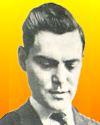
Born 20 Apr 1928; died 26 May 2003 at age 75.
Gerald Stanley Hawkins was an English-American radio astronomer and mathematician who used a computer to show that Stonehenge was a prehistoric astronomical observatory. In the 18th century, William Stukely had noticed that the horseshoe of trilithons and 19 bluestones opened up in the direction of the midsummer sunrise. Hawkins identified 165 key points that correlated the stones and other archaeological features of the neolithic complex to the rising and setting positions of the sun and moon over an 18.6-year cycle. He first published his findings in an article, Stonehenge Decoded, in the journal Nature (1963), and then in a book with the same title (1965). In Beyond Stonehenge he explored the mysteries of Machu Pichu, the Nasca Lines, Easter Island and the Egyptian Temples of Karnak and Amon-Ra. In the 1990s, he studied the geometry of crop circles.
Gerald Stanley Hawkins was an English-American radio astronomer and mathematician who used a computer to show that Stonehenge was a prehistoric astronomical observatory. In the 18th century, William Stukely had noticed that the horseshoe of trilithons and 19 bluestones opened up in the direction of the midsummer sunrise. Hawkins identified 165 key points that correlated the stones and other archaeological features of the neolithic complex to the rising and setting positions of the sun and moon over an 18.6-year cycle. He first published his findings in an article, Stonehenge Decoded, in the journal Nature (1963), and then in a book with the same title (1965). In Beyond Stonehenge he explored the mysteries of Machu Pichu, the Nasca Lines, Easter Island and the Egyptian Temples of Karnak and Amon-Ra. In the 1990s, he studied the geometry of crop circles.
Stonehenge Decoded, by Gerald S. Hawkins. - book suggestion.
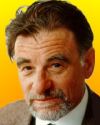
Born 20 Apr 1927.
Karl Alex Müller is a Swiss physicist who shared (with J. Georg Bednorz) the 1987 Nobel Prize for Physics for their joint discovery of superconductivity in certain substances at higher temperatures than had previously been thought attainable. They startled the world by reporting superconductivity in a layered, ceramic material at a then-record-high temperature of 33 degrees above absolute zero. Their discovery set new research worldwide into related materials that yielded dozens of new superconductors, eventually reaching a transition temperature of 135 kelvin.
Karl Alex Müller is a Swiss physicist who shared (with J. Georg Bednorz) the 1987 Nobel Prize for Physics for their joint discovery of superconductivity in certain substances at higher temperatures than had previously been thought attainable. They startled the world by reporting superconductivity in a layered, ceramic material at a then-record-high temperature of 33 degrees above absolute zero. Their discovery set new research worldwide into related materials that yielded dozens of new superconductors, eventually reaching a transition temperature of 135 kelvin.
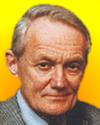
Born 20 Apr 1918; died 20 Jul 2007 at age 89.
Swedish physicist who shared (with Nicolaas Bloembergen and Arthur L.Schawlow) the 1981 Nobel Prize for Physics for “his contribution to the development of high-resolution electron spectroscopy.” He analyzed the resulting electrons that were knocked out from the interior of an atom by a high energy X-ray photons. Thus he could measure the binding energy of atomic electrons with higher accuracy than was previusly possible. Furthermore, since that binding energy was somewhat dependent upon the chemical environment of the atom, this provided a new tool of chemical analysis—ESCA (Electron Spectroscopy for Chemical Analysis). ESCA is now used by hundreds of laboratories around the world to investigate surface reactions, such as corrosion or catalytic reactions, and others also of great important in industrial chemistry. His father, Karl Manne Georg Siegbahn, received the 1924 Nobel Prize in Physics.«
Swedish physicist who shared (with Nicolaas Bloembergen and Arthur L.Schawlow) the 1981 Nobel Prize for Physics for “his contribution to the development of high-resolution electron spectroscopy.” He analyzed the resulting electrons that were knocked out from the interior of an atom by a high energy X-ray photons. Thus he could measure the binding energy of atomic electrons with higher accuracy than was previusly possible. Furthermore, since that binding energy was somewhat dependent upon the chemical environment of the atom, this provided a new tool of chemical analysis—ESCA (Electron Spectroscopy for Chemical Analysis). ESCA is now used by hundreds of laboratories around the world to investigate surface reactions, such as corrosion or catalytic reactions, and others also of great important in industrial chemistry. His father, Karl Manne Georg Siegbahn, received the 1924 Nobel Prize in Physics.«
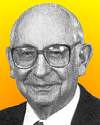
Born 20 Apr 1915; died 4 Dec 1997 at age 82.
South African-born American psychotherapist who helped usher in cognitive behavioral therapy during the 1960s; he devised a treatment to help desensitize patients with phobias by exposing them to their fears incrementally. He worked on systematic desensitization with a methodology designed to treat people with extreme anxiety about specific events, situations, things, or people. His approach involved developing a hierarchy of anxiety-provoking situations, learning relaxation techniques, then associating these situations with relaxation, beginning at the bottom, or least anxiety-provoking, part of the hierarchy. He founded the Association for Advancement of Behaviour Therapy and the Journal of Behavior Therapy.
South African-born American psychotherapist who helped usher in cognitive behavioral therapy during the 1960s; he devised a treatment to help desensitize patients with phobias by exposing them to their fears incrementally. He worked on systematic desensitization with a methodology designed to treat people with extreme anxiety about specific events, situations, things, or people. His approach involved developing a hierarchy of anxiety-provoking situations, learning relaxation techniques, then associating these situations with relaxation, beginning at the bottom, or least anxiety-provoking, part of the hierarchy. He founded the Association for Advancement of Behaviour Therapy and the Journal of Behavior Therapy.
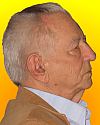
Born 20 Apr 1914; died 18 Jun 2010 at age 96.
American physiologist who, with fellow student Donald Griffin, confirmed that bats use echolocation to avoid obstacles while in flight. Their work conclusively proved Jurine's suggestion, of a century and a half before, that bats could hear sounds beyond the human range, and that this ability facilitated night flight. In their experiment (1938), a special microphone in a dark room was used to prove that bats flying in the dark could “see” by emitting ultrasonic vocal sounds and then navigating around obstacles using the echoes as an internal guidance system. Such flight was severely impaired if either a bat's ears were plugged, or its mouth was held closed by a loop of thread. Galambos' subsequent career was devoted to the neurophysiology of hearing and the brain.«
American physiologist who, with fellow student Donald Griffin, confirmed that bats use echolocation to avoid obstacles while in flight. Their work conclusively proved Jurine's suggestion, of a century and a half before, that bats could hear sounds beyond the human range, and that this ability facilitated night flight. In their experiment (1938), a special microphone in a dark room was used to prove that bats flying in the dark could “see” by emitting ultrasonic vocal sounds and then navigating around obstacles using the echoes as an internal guidance system. Such flight was severely impaired if either a bat's ears were plugged, or its mouth was held closed by a loop of thread. Galambos' subsequent career was devoted to the neurophysiology of hearing and the brain.«
Listening in the dark: The Acoustic Orientation of Bats and Men, by Donald R Griffin. - book suggestion.
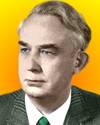
Born 20 Apr 1913; died 5 Nov 1976 at age 63.
German zoologist who proposed cladistics (Greek=branch) for the hierarchical classification of species, based on phylogeny - the evolutionary history - of the ancestors. He wished to deal with deficiencies in the system originated by Linnaeus. Hennig published a new system in his book, Theorie der phylogenetischen Systematik in 1950. Cladistics regards all new species to have evolved by descent with modification. After an evolutionary branching, some shared derived characteristics are retained. Thus the evolutionary history of current organisms can be traced back, connecting through shared ancestors to lineages of other organisms. For example, the even-toed foot of the deer, camels, cattle, pigs and hippopotamus is a homologous similarity indicating a common ancestor.«
German zoologist who proposed cladistics (Greek=branch) for the hierarchical classification of species, based on phylogeny - the evolutionary history - of the ancestors. He wished to deal with deficiencies in the system originated by Linnaeus. Hennig published a new system in his book, Theorie der phylogenetischen Systematik in 1950. Cladistics regards all new species to have evolved by descent with modification. After an evolutionary branching, some shared derived characteristics are retained. Thus the evolutionary history of current organisms can be traced back, connecting through shared ancestors to lineages of other organisms. For example, the even-toed foot of the deer, camels, cattle, pigs and hippopotamus is a homologous similarity indicating a common ancestor.«
Phylogenetic Systematics, by Willi Hennig (Trans. Dwight Davis, Rainer Zangerl). - book suggestion.
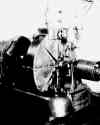
Born 20 Apr 1860; died 10 Mar 1953 at age 92.
U.S. inventor who devised a steam turbine widely used in electric power plants and in marine propulsion. He was a patent lawyer for eight years. He patented the first U.S. gas turbine (1899). Among his other achievements, the Curtis multiple-stage steam turbine (patented 1896, sold rights to GE in 1901) required one tenth the space and weighed one eighth as much as machines it replaced. The Curtis generator was the most powerful steam turbine in the world and represented a significant advance in the capacity of steam turbines. In spite of its high-power output, this machine cost much less than contemporary reciprocating steam engine-driven generators of the same output.Image: One of Curtis's first steam turbines - 50kw.
U.S. inventor who devised a steam turbine widely used in electric power plants and in marine propulsion. He was a patent lawyer for eight years. He patented the first U.S. gas turbine (1899). Among his other achievements, the Curtis multiple-stage steam turbine (patented 1896, sold rights to GE in 1901) required one tenth the space and weighed one eighth as much as machines it replaced. The Curtis generator was the most powerful steam turbine in the world and represented a significant advance in the capacity of steam turbines. In spite of its high-power output, this machine cost much less than contemporary reciprocating steam engine-driven generators of the same output.Image: One of Curtis's first steam turbines - 50kw.
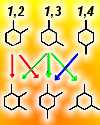
Born 20 Apr 1839; died 28 Mar 1925 at age 85. quotes
German organic chemist who established in 1874 how to determine the positions of the substituents on di- and tri-substituted isomers of the benzene ring by counting product or source isomers (five years before the Van't Hoff- Le Bel hypothesis of tetrahedral carbon.) Because the 1,2-disubstituted isomer gives two products; the 1,3 gives three; and the 1,4 gives only one, both starting compounds and products can be identified. This identifies both starting materials and products. From 1864-67, Korner worked directly with August Kekulé (who realized the ring structure of benzene). The 126 aromatic compounds he prepared included pyridine (1869) and asparagine (1887, with Angelo Menozzi). He died by suicide.«[Image: diagram showing how each disubstituted isomer (top) produces a different range of possible trisubstituted products (bottom) as listed in the text above. ] more
German organic chemist who established in 1874 how to determine the positions of the substituents on di- and tri-substituted isomers of the benzene ring by counting product or source isomers (five years before the Van't Hoff- Le Bel hypothesis of tetrahedral carbon.) Because the 1,2-disubstituted isomer gives two products; the 1,3 gives three; and the 1,4 gives only one, both starting compounds and products can be identified. This identifies both starting materials and products. From 1864-67, Korner worked directly with August Kekulé (who realized the ring structure of benzene). The 126 aromatic compounds he prepared included pyridine (1869) and asparagine (1887, with Angelo Menozzi). He died by suicide.«[Image: diagram showing how each disubstituted isomer (top) produces a different range of possible trisubstituted products (bottom) as listed in the text above. ] more
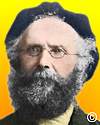
Born 20 Apr 1826; died 17 Sep 1909 at age 83.
Scottish seedsman and horticulturist who became known as the “Daffodil King” for his work identifying and developing varieties of daffodils. Further, he tirelessly popularized the flower's popularity with articles, lectures, and a post-retirement seven-year world tour. His interest in horticulture stemmed from his father's passion as an amateur gardener. Peter's career began with a position at a seed shop. In time, this led to establishing a nursery and making a systematic study and identification of garden plants. He corresponded with other nurserymen in Britain and abroad. He offered a catalog to aid his distribution of his products. In the mid-19th century, daffodils had fallen out of fashion with gardeners. Barr actively sought old varieties, saved hybrids from extinction and made new crosses—all of which he re-introduced in Britain, filling the gap in availability, beginning at a time when most daffodil bulbs were sourced from Europe.«
Scottish seedsman and horticulturist who became known as the “Daffodil King” for his work identifying and developing varieties of daffodils. Further, he tirelessly popularized the flower's popularity with articles, lectures, and a post-retirement seven-year world tour. His interest in horticulture stemmed from his father's passion as an amateur gardener. Peter's career began with a position at a seed shop. In time, this led to establishing a nursery and making a systematic study and identification of garden plants. He corresponded with other nurserymen in Britain and abroad. He offered a catalog to aid his distribution of his products. In the mid-19th century, daffodils had fallen out of fashion with gardeners. Barr actively sought old varieties, saved hybrids from extinction and made new crosses—all of which he re-introduced in Britain, filling the gap in availability, beginning at a time when most daffodil bulbs were sourced from Europe.«
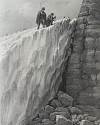
Born 20 Apr 1809; died 31 Dec 1868 at age 59.
Scottish physicist noted for his research on heat conduction and glaciers. In 1836-44, he described the polarization (alignment of waves to vibrate in a plane) of radiant infrared heat by the mineral tourmaline, by transmission through a bundle of thin mica plates, and by reflection from the surfaces of a pile of mica plates. In 1846 he began experiments on the temperature of the Earth at different depths and in different soils near Edinburgh. Later he investigated the laws of heat conduction in bars, and in his last piece of work reported that iron conducts heat less efficiently as its temperature rises. He was among the first to study glacier movements and was involved with Tyndall in the great glacier controversy of the 1850s.
Scottish physicist noted for his research on heat conduction and glaciers. In 1836-44, he described the polarization (alignment of waves to vibrate in a plane) of radiant infrared heat by the mineral tourmaline, by transmission through a bundle of thin mica plates, and by reflection from the surfaces of a pile of mica plates. In 1846 he began experiments on the temperature of the Earth at different depths and in different soils near Edinburgh. Later he investigated the laws of heat conduction in bars, and in his last piece of work reported that iron conducts heat less efficiently as its temperature rises. He was among the first to study glacier movements and was involved with Tyndall in the great glacier controversy of the 1850s.
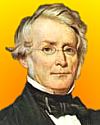
Age 58
Born 20 Apr 1798; died 22 Jun 1875 at age 77.
Canadian geologist, known as the “Father of Canadian Geology.” While working in Wales at his uncle's coal and copper-smelting business, he made geologic maps of coalfields in Wales, pursuing a desire to understand the sources of coal and ores. He noted the relationship between the underlying clay layers and fossil tree roots with local coal beds. This substantiated the theory that coal beds are formed in place. When he founded the Geological Survey of Canada, the country's geology was virtually unknown. He served as its director (1842-69) and produced the monumental Report on the Geology of Canada (1863), recording 20 years of his research, fieldwork, mapping, reports, and examation of fossil and mineral specimens. He was knighted by Queen Victoria. Canada's highest mountain is named for him.
Canadian geologist, known as the “Father of Canadian Geology.” While working in Wales at his uncle's coal and copper-smelting business, he made geologic maps of coalfields in Wales, pursuing a desire to understand the sources of coal and ores. He noted the relationship between the underlying clay layers and fossil tree roots with local coal beds. This substantiated the theory that coal beds are formed in place. When he founded the Geological Survey of Canada, the country's geology was virtually unknown. He served as its director (1842-69) and produced the monumental Report on the Geology of Canada (1863), recording 20 years of his research, fieldwork, mapping, reports, and examation of fossil and mineral specimens. He was knighted by Queen Victoria. Canada's highest mountain is named for him.
William Edmond Logan (1798-1875): Knighted Canadian Geologist, by C. Gordon Winder. - book suggestion.
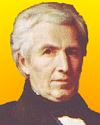
Born 20 Apr 1786; died 24 Feb 1875 at age 88.
French engineer and inventor of the wire-cable suspension bridge and the tubular steam-engine boiler. Séguin (a nephew of Joseph Montgolfier, the pioneer balloonist) developed an early interest in machinery. By 1822, he was studying the strength of wire cables. With his brother Camille he studied the principles of the suspension bridge, at that time built with chain cables. In 1824, they built a bridge suspended from cables of parallel wire strands over the Rhône River at Tournon, the first such bridge, then copied around the world. Séguin also improved locomotive efficiency with his invention of the multiple fire-tube boiler, in place of the water-tube boiler used by the earlier steam engines. The brothers collaborated in the construction of the first French railroad (1824-33).
French engineer and inventor of the wire-cable suspension bridge and the tubular steam-engine boiler. Séguin (a nephew of Joseph Montgolfier, the pioneer balloonist) developed an early interest in machinery. By 1822, he was studying the strength of wire cables. With his brother Camille he studied the principles of the suspension bridge, at that time built with chain cables. In 1824, they built a bridge suspended from cables of parallel wire strands over the Rhône River at Tournon, the first such bridge, then copied around the world. Séguin also improved locomotive efficiency with his invention of the multiple fire-tube boiler, in place of the water-tube boiler used by the earlier steam engines. The brothers collaborated in the construction of the first French railroad (1824-33).
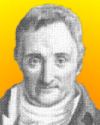
Born 20 Apr 1745; died 25 Oct 1826 at age 81.
French physician who pioneered in the humane treatment of the mentally ill. In 1792 he became the chief physician at the Paris asylum for men, Bicêtre, and made his first bold reform by unchaining patients, many of whom had been restrained for 30 to 40 years. He did the same for the female inmates of Salpêtrière when he became the director there in 1794. Discarding the long-popular equation of mental illness with demoniacal possession, Pinel regarded mental illness as the result of excessive exposure to social and psychological stresses and, in some measure, of heredity and physiological damage.
French physician who pioneered in the humane treatment of the mentally ill. In 1792 he became the chief physician at the Paris asylum for men, Bicêtre, and made his first bold reform by unchaining patients, many of whom had been restrained for 30 to 40 years. He did the same for the female inmates of Salpêtrière when he became the director there in 1794. Discarding the long-popular equation of mental illness with demoniacal possession, Pinel regarded mental illness as the result of excessive exposure to social and psychological stresses and, in some measure, of heredity and physiological damage.
Born 20 Apr 1739; died 22 Jul 1823 at age 84.
American traveller and naturalist, the son of botanist John Bartram, whom he accompanied on botanical expeditions. From 1773, William Bartram made his own exploration of several Southern states, observing the wildlife: birds, animals, fishes as well as plants. He also made notes on life of the Indians. He wrote about his journeys in much the reprinted Travels (1791). Alexander Wilson, a Scottish immigrant to America, was inspired to become a leading ornithologist with Bartram's coaching. When Benjamin Smith Barton authored the first botanical textbook published in the U.S., Elements of Botany (1803), Bartram illustrated it.
American traveller and naturalist, the son of botanist John Bartram, whom he accompanied on botanical expeditions. From 1773, William Bartram made his own exploration of several Southern states, observing the wildlife: birds, animals, fishes as well as plants. He also made notes on life of the Indians. He wrote about his journeys in much the reprinted Travels (1791). Alexander Wilson, a Scottish immigrant to America, was inspired to become a leading ornithologist with Bartram's coaching. When Benjamin Smith Barton authored the first botanical textbook published in the U.S., Elements of Botany (1803), Bartram illustrated it.
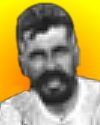
1898
Died 20 Apr 1940 at age 84 (born 24 May 1855).
English anthropologist who is recognised as one the founders of modern British anthropology as an observational science. He began as a professor of zoology, and in 1888 spent eight months studying the coral reefs and marine zoology of the Torres Straits. He thereby became interested in the folk-lore, ceremonies and beliefs of the islanders and began to rescue such fast-perishing knowledge by collecting information from the elders. He organised the Cambridge Anthropological Expedition to the Torres Strait Islands in 1898, as he saw a need in the field of ethnology to make intensive studies in limited areas. Upon his return, he changed disciplines from biology to ethnology at the Cambridge University Museum.«*
English anthropologist who is recognised as one the founders of modern British anthropology as an observational science. He began as a professor of zoology, and in 1888 spent eight months studying the coral reefs and marine zoology of the Torres Straits. He thereby became interested in the folk-lore, ceremonies and beliefs of the islanders and began to rescue such fast-perishing knowledge by collecting information from the elders. He organised the Cambridge Anthropological Expedition to the Torres Strait Islands in 1898, as he saw a need in the field of ethnology to make intensive studies in limited areas. Upon his return, he changed disciplines from biology to ethnology at the Cambridge University Museum.«*
Magic and Fetishism, by Alfred Cort Haddon. - book suggestion.
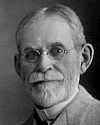
Died 20 Apr 1940 at age 85 (born 25 Apr 1854).
American inventor of various sound-recording instruments, including the photophone (1880, with Alexander Graham Bell), an instrument for transmitting sound to a distance through the agency of light, using sensitive selenium cells. He also developed the Graphophone (1881, patented 1886; with Chichester A. Bell, a cousin of Alexander Graham Bell). This greatly improved on the tinfoil surface and rigid stylus then used by Thomas Edison. Tainter devising a wax-coated cardboard cylinder and a flexible recording stylus which incised the grooves (rather than embossing) to achieve better reproduction, making the phonograph and the dictagraph commercially possible.
American inventor of various sound-recording instruments, including the photophone (1880, with Alexander Graham Bell), an instrument for transmitting sound to a distance through the agency of light, using sensitive selenium cells. He also developed the Graphophone (1881, patented 1886; with Chichester A. Bell, a cousin of Alexander Graham Bell). This greatly improved on the tinfoil surface and rigid stylus then used by Thomas Edison. Tainter devising a wax-coated cardboard cylinder and a flexible recording stylus which incised the grooves (rather than embossing) to achieve better reproduction, making the phonograph and the dictagraph commercially possible.
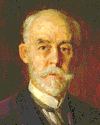
1884
Died 20 Apr 1933 at age 86 (born 1 Dec 1846).
American archaeologist, artist, and museum director who helped to establish professional archaeology in the United States. He was a geologist and outstanding illustrator who turned to archaeology while working for the U.S. Geological Survey (1875) and became an expert on southwestern Indian art and prehistoric ceramics and stone implements. His knowledge of geology, archaeology, anthropology, and ethnology made him a master in the scientific documentation of landscapes. His achievements included important publications on Indian cultures in prehistory and on Mayan civilization at Chichen Itza. He was chief of the Bureau of American Ethnology (1902-09) and director of the National Gallery of Art (1920-32).
American archaeologist, artist, and museum director who helped to establish professional archaeology in the United States. He was a geologist and outstanding illustrator who turned to archaeology while working for the U.S. Geological Survey (1875) and became an expert on southwestern Indian art and prehistoric ceramics and stone implements. His knowledge of geology, archaeology, anthropology, and ethnology made him a master in the scientific documentation of landscapes. His achievements included important publications on Indian cultures in prehistory and on Mayan civilization at Chichen Itza. He was chief of the Bureau of American Ethnology (1902-09) and director of the National Gallery of Art (1920-32).
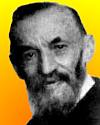
Died 20 Apr 1932 at age 73 (born 27 Aug 1858). quotes
Italian mathematician who founded symbolic logic. Through the use of symbols, equations are more easily understood by anyone regardless of their language. For example, Peano introduced symbols to represent “belongs to the set of” and “there exists.” In Arithmetics principia (1889), a pamphlet he wrote in Latin, Peano published his first version of a system of mathematical logic, giving his Peano axioms defining the natural numbers in terms of sets. In 1903, Peano unsuccessfully proposed an international, artificial language he called “Latino sine flexione.” It was based on Latin without grammar. Its vocabulary comprised words from English, French, German and Latin.«
Italian mathematician who founded symbolic logic. Through the use of symbols, equations are more easily understood by anyone regardless of their language. For example, Peano introduced symbols to represent “belongs to the set of” and “there exists.” In Arithmetics principia (1889), a pamphlet he wrote in Latin, Peano published his first version of a system of mathematical logic, giving his Peano axioms defining the natural numbers in terms of sets. In 1903, Peano unsuccessfully proposed an international, artificial language he called “Latino sine flexione.” It was based on Latin without grammar. Its vocabulary comprised words from English, French, German and Latin.«
Died 20 Apr 1919 at age 72 (born 5 Jan 1847).
American geologist who advanced the study of mining geology from physical, chemical, and mathematical approaches. Becker's main interest was the study of the Earth's interior, and his theoretical work on this topic was presented in a series of important papers in the 1890s; his most important theoretical contribution was Finite Homogeneous Strain, Flow, and Rupture of Rocks (1893).
American geologist who advanced the study of mining geology from physical, chemical, and mathematical approaches. Becker's main interest was the study of the Earth's interior, and his theoretical work on this topic was presented in a series of important papers in the 1890s; his most important theoretical contribution was Finite Homogeneous Strain, Flow, and Rupture of Rocks (1893).
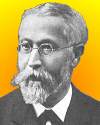
Died 20 Apr 1918 at age 67 (born 6 Jun 1850).
Karl Ferdinand Braun was a German physicist who shared the Nobel Prize for Physics in 1909 with Guglielmo Marconi for the development of wireless telegraphy. He published papers on deviations from Ohm's law and on the calculations of the electromotive force of reversible galvanic elements from thermal sources, and discovered (1874) the electrical rectifier effect. He demonstrated the first cathode-ray oscilloscope (Braun tube) in 1897, after work on high-frequency alternating currents. Cathode-ray tubes had previously been characterized by uncontrolled rays; Braun succeeded in producing a narrow stream of electrons, guided by means of alternating voltage, that could trace patterns on a fluorescent screen.
Karl Ferdinand Braun was a German physicist who shared the Nobel Prize for Physics in 1909 with Guglielmo Marconi for the development of wireless telegraphy. He published papers on deviations from Ohm's law and on the calculations of the electromotive force of reversible galvanic elements from thermal sources, and discovered (1874) the electrical rectifier effect. He demonstrated the first cathode-ray oscilloscope (Braun tube) in 1897, after work on high-frequency alternating currents. Cathode-ray tubes had previously been characterized by uncontrolled rays; Braun succeeded in producing a narrow stream of electrons, guided by means of alternating voltage, that could trace patterns on a fluorescent screen.
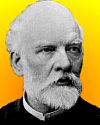
Died 20 Apr 1899 at age 67 (born 12 Mar 1832).
French organic chemist and mineralogist who, with the American chemist James Mason Crafts, discovered in 1877 the chemical process known as the Friedel-Crafts reaction. In 1856, after studying in Strasburg, Friedel was appointed conservator of the mineralogical collections at the Superior National School of Mines. In 1871 he began to lecture at the École Normale and in 1876 became professor of mineralogy at the Sorbonne, but on the death of Wurtz in 1884 he exchanged that position for the chair of organic chemistry. He collaborated in efforts to form diamonds artificially, studied the pyroelectric properties of crystals, determined crystallographic constants, and did research on ketone and aldehyde compounds.
French organic chemist and mineralogist who, with the American chemist James Mason Crafts, discovered in 1877 the chemical process known as the Friedel-Crafts reaction. In 1856, after studying in Strasburg, Friedel was appointed conservator of the mineralogical collections at the Superior National School of Mines. In 1871 he began to lecture at the École Normale and in 1876 became professor of mineralogy at the Sorbonne, but on the death of Wurtz in 1884 he exchanged that position for the chair of organic chemistry. He collaborated in efforts to form diamonds artificially, studied the pyroelectric properties of crystals, determined crystallographic constants, and did research on ketone and aldehyde compounds.
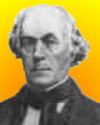
Died 20 Apr 1868 at age 74 (born 10 Jun 1793).
American inventor and clockmaker whose products enjoyed widespread popularity in the mid-19th century. About 1838 Jerome invented the one-day brass movement, an improvement over the wood clock. Applying the mass-production techniques of American inventor Eli Whitney, Jerome flooded the United States with low-priced brass clocks. His clocks quickly spread to Europe and so astonished the English that "Yankee ingenuity" became a byword. In the 1850s Jerome became associated with unethical businessmen, and his company failed; he died in poverty.
American inventor and clockmaker whose products enjoyed widespread popularity in the mid-19th century. About 1838 Jerome invented the one-day brass movement, an improvement over the wood clock. Applying the mass-production techniques of American inventor Eli Whitney, Jerome flooded the United States with low-priced brass clocks. His clocks quickly spread to Europe and so astonished the English that "Yankee ingenuity" became a byword. In the 1850s Jerome became associated with unethical businessmen, and his company failed; he died in poverty.
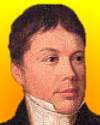
Died 20 Apr 1859 at age 71 (born 21 Mar 1788).
Swiss geologist who was one of the first to propose that vast glaciers once covered a substantial portion of the earth's surface. He came to this conclusion by observing that typical striations left in rock by glaciers extended for many miles beyond the limits of existing glaciers. He published these thoughts in 1821, but they were generally ignored. Jean de Chapentier supported Venetz in these ideas, but was also ignored. However, they influenced Louis Agassiz who developed them.[Name also spelled Ignaz or Ignace.]
Swiss geologist who was one of the first to propose that vast glaciers once covered a substantial portion of the earth's surface. He came to this conclusion by observing that typical striations left in rock by glaciers extended for many miles beyond the limits of existing glaciers. He published these thoughts in 1821, but they were generally ignored. Jean de Chapentier supported Venetz in these ideas, but was also ignored. However, they influenced Louis Agassiz who developed them.[Name also spelled Ignaz or Ignace.]
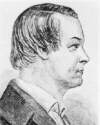
Died 20 Apr 1856 at age 68 (born 18 Oct 1787).
U.S. engineer and ship designer who invented the inverted-T railroad rail and the railroad spike. He tested the first steamboat to use screw propellers, invented and built by his father, John Stevens. Robert designed the first concave waterlines on a steamboat (1808), the first supporting iron rods for projecting guard beams on steamboats (1815), the first skeleton walking beams for ferries (1822), the spring pile ferry slip (1822), the placement of boilers on guards outside the paddle wheels of ferries (1822), the hog frame or truss for stiffening ferry boats longitudinally (1827), spring steel bearings of paddle wheel shafts (1828), improved packing for pistons (1840), and was first to successfully burn anthracite coal in a cupola furnace (1818). He found that rails laid on wooden ties, with crushed stone or gravel beneath, provided a roadbed superior to any known before. His rail and roadbed came into universal use in the United States. He also added the pilot, or cowcatcher, to the locomotive and increased the number of drive wheels to eight for better traction. more
U.S. engineer and ship designer who invented the inverted-T railroad rail and the railroad spike. He tested the first steamboat to use screw propellers, invented and built by his father, John Stevens. Robert designed the first concave waterlines on a steamboat (1808), the first supporting iron rods for projecting guard beams on steamboats (1815), the first skeleton walking beams for ferries (1822), the spring pile ferry slip (1822), the placement of boilers on guards outside the paddle wheels of ferries (1822), the hog frame or truss for stiffening ferry boats longitudinally (1827), spring steel bearings of paddle wheel shafts (1828), improved packing for pistons (1840), and was first to successfully burn anthracite coal in a cupola furnace (1818). He found that rails laid on wooden ties, with crushed stone or gravel beneath, provided a roadbed superior to any known before. His rail and roadbed came into universal use in the United States. He also added the pilot, or cowcatcher, to the locomotive and increased the number of drive wheels to eight for better traction. more
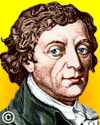
Died 20 Apr 1821 at age 67 (born 28 Apr 1753). quotes
German chemist and experimental physicist who invented a process for the large-scale extraction of table sugar (sucrose) from beets, and in 1801, opened the first sugar-beet factory, in Silesia (now Poland). At first, though simple, the method was costly, He improved it using suggestions of the Institute in France, including that the beets be pressed without cooking them, which saved much expense for fuel. He had succeeded Andreas Sigismund Marggrafupon his death (1782) as director of the “Class of Physics” at the Berlin Academy. It was Marggraf that had first discovered the presence of sugar in beet-root, and isolated it on an experimental scale in 1747. Achard also discovered a method for working platinum and was the first to prepare a platinum crucible (1784). more
German chemist and experimental physicist who invented a process for the large-scale extraction of table sugar (sucrose) from beets, and in 1801, opened the first sugar-beet factory, in Silesia (now Poland). At first, though simple, the method was costly, He improved it using suggestions of the Institute in France, including that the beets be pressed without cooking them, which saved much expense for fuel. He had succeeded Andreas Sigismund Marggrafupon his death (1782) as director of the “Class of Physics” at the Berlin Academy. It was Marggraf that had first discovered the presence of sugar in beet-root, and isolated it on an experimental scale in 1747. Achard also discovered a method for working platinum and was the first to prepare a platinum crucible (1784). more
Died 20 Apr 1794 at age 64 (born 16 Jan 1730).
French lawyer and natural scientist who pursued his interest in astronomy both as a productive amatuer and a patron. He assembled a significant collection of astronomical instruments made by renowned craftsmen. He both utilized then himself and gave access to his academic colleagues. In collaboration with Charles Messier, who provided the data, he calculated orbits of comets, helping his friend find them again after they had disappeared behind the sun. He funded the publication of Laplace's Theory of the Movement and Elliptic Figure of the Planets (1784). Bochart made calculations for what was at first called Herschel's comet, supposing a circular orbit at twelve time the Sun-Saturn distance. This was refined by Laplace, and contributed to the discovery of Uranus. Bochart died as a politician guillotined during the French Revolution..«
French lawyer and natural scientist who pursued his interest in astronomy both as a productive amatuer and a patron. He assembled a significant collection of astronomical instruments made by renowned craftsmen. He both utilized then himself and gave access to his academic colleagues. In collaboration with Charles Messier, who provided the data, he calculated orbits of comets, helping his friend find them again after they had disappeared behind the sun. He funded the publication of Laplace's Theory of the Movement and Elliptic Figure of the Planets (1784). Bochart made calculations for what was at first called Herschel's comet, supposing a circular orbit at twelve time the Sun-Saturn distance. This was refined by Laplace, and contributed to the discovery of Uranus. Bochart died as a politician guillotined during the French Revolution..«
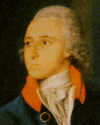
Died 20 Apr 1786 at age 21 (born 17 Sep 1764).
English astronomer who was the first to notice that some variable stars were periodic.Born a deaf-mute, after a proper education he was able to read lips and to speak. He was the first to calculate the period of Algol to 68 hours and 50 minutes, where the star was changing its brightness by more than a magnitude as seen from Earth. He was also first to correctly propose that the distant sun is periodically occulted by a dark body. John Goodricke was admitted to the Royal Society on 16 April 1786, when 21 years old. He didn't recognized this honour, because he died four days later, in York, by pneumonia.
English astronomer who was the first to notice that some variable stars were periodic.Born a deaf-mute, after a proper education he was able to read lips and to speak. He was the first to calculate the period of Algol to 68 hours and 50 minutes, where the star was changing its brightness by more than a magnitude as seen from Earth. He was also first to correctly propose that the distant sun is periodically occulted by a dark body. John Goodricke was admitted to the Royal Society on 16 April 1786, when 21 years old. He didn't recognized this honour, because he died four days later, in York, by pneumonia.
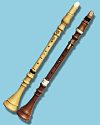
Died 20 Apr 1707 at age 51 (born 13 Aug 1655).
German inventor, maker of musical instruments and inventor of the clarinet. He made improvements to the chalumeau, the first true single reed instrument, of the late 1600's. He and his son Jacob are attributed with innovating the speaker key which gave the clarinet a larger register. The clarinet overblows at the 12th. That is, when playing a C without the speaker key, then add the speaker key, the note that sounds is a G, which is the interval of a twelfth. The other woodwind instruments overblow at the octave. The clarinet bore is cylindrical, whereas every other woodwind instrument has a conical bore (even the flute!). This is why the clarinet overblows at the twelfth and is so laden with overtones, which contributes to its unique sound.
German inventor, maker of musical instruments and inventor of the clarinet. He made improvements to the chalumeau, the first true single reed instrument, of the late 1600's. He and his son Jacob are attributed with innovating the speaker key which gave the clarinet a larger register. The clarinet overblows at the 12th. That is, when playing a C without the speaker key, then add the speaker key, the note that sounds is a G, which is the interval of a twelfth. The other woodwind instruments overblow at the octave. The clarinet bore is cylindrical, whereas every other woodwind instrument has a conical bore (even the flute!). This is why the clarinet overblows at the twelfth and is so laden with overtones, which contributes to its unique sound.
In 1964, the scheduled broadcast launch of the new BBC2 channel at 7:20 pm BST was made impossible by a major power failure that affected most of west London, including the Television Centre. The blackout was due to a fire at the Battersea Power Station, and lasted the whole of the evening. Even the hasty change to start with a short news bulletin from Alexandra Palace, another BBC studio that still had power, was plagued with problems. The broadcaster, Gerald Priestland, was first seen without any sound for two minutes. The remainder of the evening was filled with test cards and instrumental music. The first BBC2 broadcast programmes began the next day at 11 am on 21 Apr 1964. The new channel was designed for a new standard of 625 lines on the screen for greater picture clarity.«
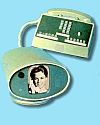
In 1964, the first picturephone transcontinental call was made between New York City and Anaheim, California. The device consisted of a telephone handset and a small, matching TV. It allowed telephone users to see each other in fuzzy video images as they carried on a conversation. When Picturephone debuted in 1964, at the World’s Fair, prices ranged from $16 to $27 for a three-minute call between special booths AT&T set up in New York, Washington and Chicago. It never became popular after it was briefly offered commercially in Chicago.
In 1940, the first U.S. electron misroscope was demonstrated in Philadelphia, Pennsylvania. It was able to produce a magnification of 100,000 times, in an apparatus 10 feet high and weighing half a ton. The inventor was Dr. Vladimir Zworykin at the RCA laboratories, Camden, New Jersey.
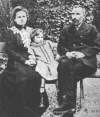
In 1902, Pierre and Marie Curie isolated one gram of pure radium chloride, the first sample of the radioactive element. They had refined it from eight tons of pitchblende ore. Previously, in 1898, the Curies discovered the radioactivity of pitchblende, which they later identified as due to radium and polonium. For her work isolating the radium salt in 1902, she was awarded her doctorate of science degree in Jun 1903. The Nobel Prize for Physics was awarded in 1903, jointly to Marie and her husband, Pierre. Marie continued her work and finally succeeded in isolating pure, metallic radium in 1910. She received the 1911 Nobel Prize in Chemistry, becoming the first person to win two Nobels.«
Madame Curie: A Biography, by Eve Curie. - book suggestion.
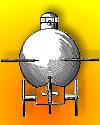
(USPTO)
In 1897, a U.S. patent was issused for a "Submarine Vessel" invented by Simon Lake (No. 581,213). It described oscillatory lateral vanes on the sides of the vessel to set for ascending or descending, a weight to shift fore-and-aft to keep the vessel on an even keel, a compressed air reservoir, ballast tanks, an "air-tight diver's chamber provided at the bottom with a trap" (suitable for diving salvage operations), and wheels to travel on the water-bed which could be propelled and steered from within. Lake was interested in the use of a submarine for commercial, rather than military, purposes. It had a hinged observation tube, which could be provided with a mirror (forerunner of the perioscope). It was expected to be steam-powered on the surface (but in practice the heat generated by the boiler was intolerable to a crew, and thus impracticable.)«[Image: rear view of submarine, showing hull with lateral vanes, wheels and propeller.]
Argonaut: The Submarine Legacy of Simon Lake, by John J. Poluhowich. - book suggestion.

Current ACS logo
In 1876, the first national chemical society in the U.S., the American Chemical Society, was organized in New York City. Earlier, eight New York City chemists assembled on 22 Jan 1876 at the home of Prof. Charles F. Chandler. They arranged circulars to invite other chemists to meet on 6 Apr 1876. It was at their meeting on 20 Apr 1876 that the society was formally established.. The constitution and by-laws were considered and adopted, and the officers were elected for the year. On 4 May 1876, the first paper was read. Meetings at this time were held at the University Building. Minutes of meetings and papers were published in the American Chemist with Charles Chandler as editor. The national American Chemical Society was chartered on 9 Nov 1877.«
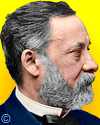
In 1862, the first test of pasteurization was completed by Louis Pasteur and Claude Bernard. Jars, sealed since 3 Mar, were opened at a meeting of the French Academy of Sciences. They containing dog’s blood and urine that had been maintained at an elevated temperature of 30ºC. Neither liquid showed observable decay or fermentation. This suggested the possibility of heating foods sufficiently to kill germs without significantly altering their chemical composition. Pasteurization was applied by brewers. By heating the finished beer to above 160ºF, to kill harmful bacteria, a germ-free beer could be produced which did not require constant refrigeration for lengthy shipment or storage. It also came to be used for milk and other products.
The Untold Story of Milk, by Ron Schmid. - book suggestion.
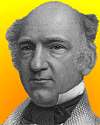
Bigelow
In 1837, the first U.S. patent for a carpet power loom was issued to Erastus B. Bigelow of West Boyston, Mass.
more
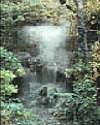
In 1832, what is now Hot Springs National Park in Arkansas was established as a reservation by an act of Congress. Its 911 acres encompassed 46 hot springs. It was not designated as a National Park until 4 Mar 1921. Yellowstone National Park was the first to be declared a U.S. National Park (authorized on 1 Mar 1872). Thus, Hot Springs is the nation's oldest national park, though not the first to carry the "National Park" designation. The park is wrapped around the core of the city of Hot Springs retaining much of the experience of early-1900s health-seekers who came to take thermal baths in the city's bathhouses and hotels. American Indian tribes had used the thermal springs for centuries before the territory was settled by whites.




